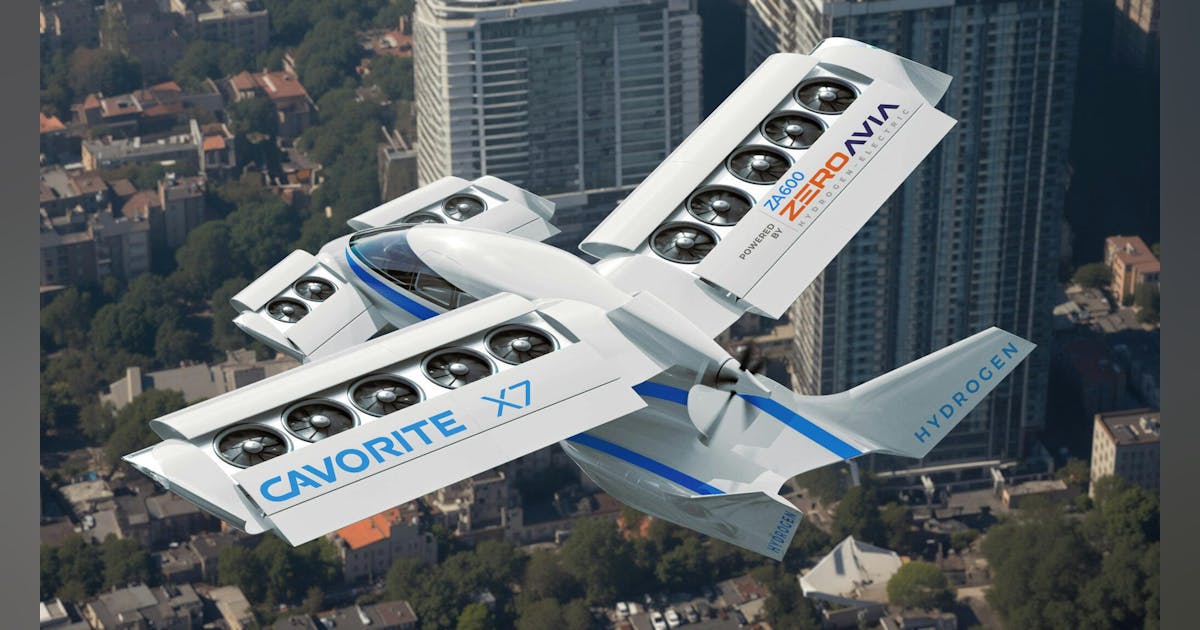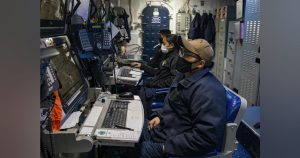ZeroAvia and Horizon Aircraft Collaborate for Hydrogen-Electric Propulsion in eVTOL Travel
In a significant step towards achieving zero-emission regional air mobility, July 2025 saw the announcement of a collaboration between innovation leaders ZeroAvia and Horizon Aircraft. Their partnership aims to reimagine sustainable aviation by evaluating hydrogen-electric propulsion for cutting-edge eVTOL (electric vertical takeoff and landing) aircraft.
Why This Partnership Is Significant
The collaboration combines ZeroAvia’s expertise in hydrogen-electric powertrains with Horizon’s pioneering Cavorite X7 eVTOL platform, moving beyond a simple technical exploration. It represents a commitment to the future of clean, rapid, and feasible regional travel. By integrating the ZeroAvia ZA600 hydrogen-electric powertrain into the Cavorite X7, the goal is to efficiently tackle regional travel routes where range and operational efficiency have limited purely electric options.
“We appreciate the chance to explore hydrogen solutions in the regional air mobility sphere—a promising avenue for achieving clean, swift, and effective air transportation,” remarked Brandon Robinson, CEO of Horizon Aircraft.
The Technologies at Play
ZeroAvia ZA600 Hydrogen-Electric Powertrain
- Power Output: 600 kW, catering to small regional planes and the up-and-coming eVTOL market.
- Certification Status: Recently received an FAA G-1 Issue Paper, setting regulatory groundwork, with complete certification expected by 2026–2027.
- Testing Phases: Currently undertaking flight tests on aircraft such as the Cessna Caravan, enhancing trust in its practical capabilities and regulatory acceptance.
Horizon Aircraft Cavorite X7
- Design: A seven-seat eVTOL featuring a fan-in-wing layout, with 14 lift fans in the wings for VTOL, transitioning smoothly to a fixed-wing airplane through sliding panels during forward flight.
- Aim for Performance: 500-mile range and 250 knots cruising speed, rivalling regional turboprops but potentially with much lower emissions and expenses.
- Prototype Success: Notable untethered flight tests and the completion of vertical to horizontal flight transition as of May 2025, with backing from the U.S. Department of Defense and Canadian regulators.
The Game-Changer: Hydrogen-Electric Power
While purely battery-driven eVTOLs are often limited by range and payload issues, hydrogen fuel cells offer:
- Higher energy density than traditional batteries: Capable of extending practicable range to 500 miles or more.
- Rapid refueling: Hydrogen can be refueled in minutes, contrasting lengthy battery recharging times.
- Lower lifecycle emissions: Renewable hydrogen allows for net-zero operations.
- Increased durability: Reduces battery cycling and heating, lengthening aircraft lifespan.
Val Miftakhov, CEO of ZeroAvia, explains: “More eVTOL developers view hydrogen-electric propulsion as a breakthrough, enhancing range and durability of electric propulsion systems. Horizon Aircraft’s work and successful prototype tests are commendable.”
Beyond the Engines: Infrastructure & Certification
This venture involves more than just engine innovations. Both teams are addressing the larger ecosystem challenges, such as:
- Creating hydrogen supply and refueling infrastructure for regional air transport hubs.
- Developing certification and safety standards necessary for regulatory endorsement of hydrogen-electric technologies, paving the way for commercial use.
These efforts are in collaboration with regulators from the U.S., Canada, and internationally, buoyed by recent advances in ZeroAvia’s FAA progression and Horizon Cavorite’s flight validation.
Positioning in the Market & Competitive Landscape
This initiative places Horizon Aircraft’s Cavorite X7 as a robust rival among eVTOLs and traditional regional aircraft. The hybrid/hydrogen propulsion system promises:
- Cost-efficiency per seat-mile: Potentially undercutting jet-A-powered adversaries.
- Quiet operations in urban settings: Ideal for city-to-city air taxi services.
- Regulatory headway: Following the path of leading firms like Joby Aviation, venturing into hydrogen-powered models.
Impact in Reality & Ongoing Successes
- Military Attention: Horizon’s Department of Defense backing indicates dual-use (civil/military) appeal.
- Prototype Triumph: With real-world flight and transition capabilities, the Cavorite X7 is proven beyond mere concept stage.
- Certification Timeline: Horizon aims for a 2030 certification milestone, ambitious yet attainable with evolving hydrogen infrastructure and standards.
Industry Insights & Expert Opinions
Brandon Robinson (Horizon): Emphasizes dedication to functional operator needs and sustainable aviation. Sees hydrogen as a key to “achieving clean, prompt, and highly efficient air travel” for regions presently underserved.
Val Miftakhov (ZeroAvia): Highlights hydrogen as pivotal for advancing range and reliability beyond just city-centric air taxis, to impacting substantial regional routes.
The Road Ahead
- Priority on Powertrain Integration: Testing how effectively the ZA600 substitutes the hybrid gas generator in a functioning Cavorite X7 chassis.
- Infrastructure Strategy: Developing supply chains and refueling technology, potentially partnering with airport authorities and hydrogen producers.
- Certification Pathway: Leveraging each company’s regulatory knowledge to target commercial launch by the late 2020s for ZeroAvia-equipped planes, aiming for 2030 for fully certified Cavorite X7s.
- Commercial Applications: Covers regional commuter flights, cargo transport, medical missions, and Department of Defense roles, capable of utilizing both traditional runways and small helipads.
Wider Implications
This collaboration signifies the evolution of eVTOL and hydrogen industries from experimental to integrated, certifiable, scalable solutions. It underscores that decarbonizing air travel is transitioning from a lofty goal to a feasible engineering and commercial strategy—bolstered by tangible prototypes, regulatory advancements, and clear market intentions.
The alliance between Horizon and ZeroAvia could potentially set the pace in defining new norms for regional air mobility—a future where electric fan whispers replace the roar of kerosene-fueled engines, and hydrogen shares the aviation spotlight with jet fuel.
For those monitoring sustainable aviation’s trajectory, this venture represents more than another prototype; it’s a glimpse into potential eco-friendly regional skies and the visionaries racing to make it a reality.













